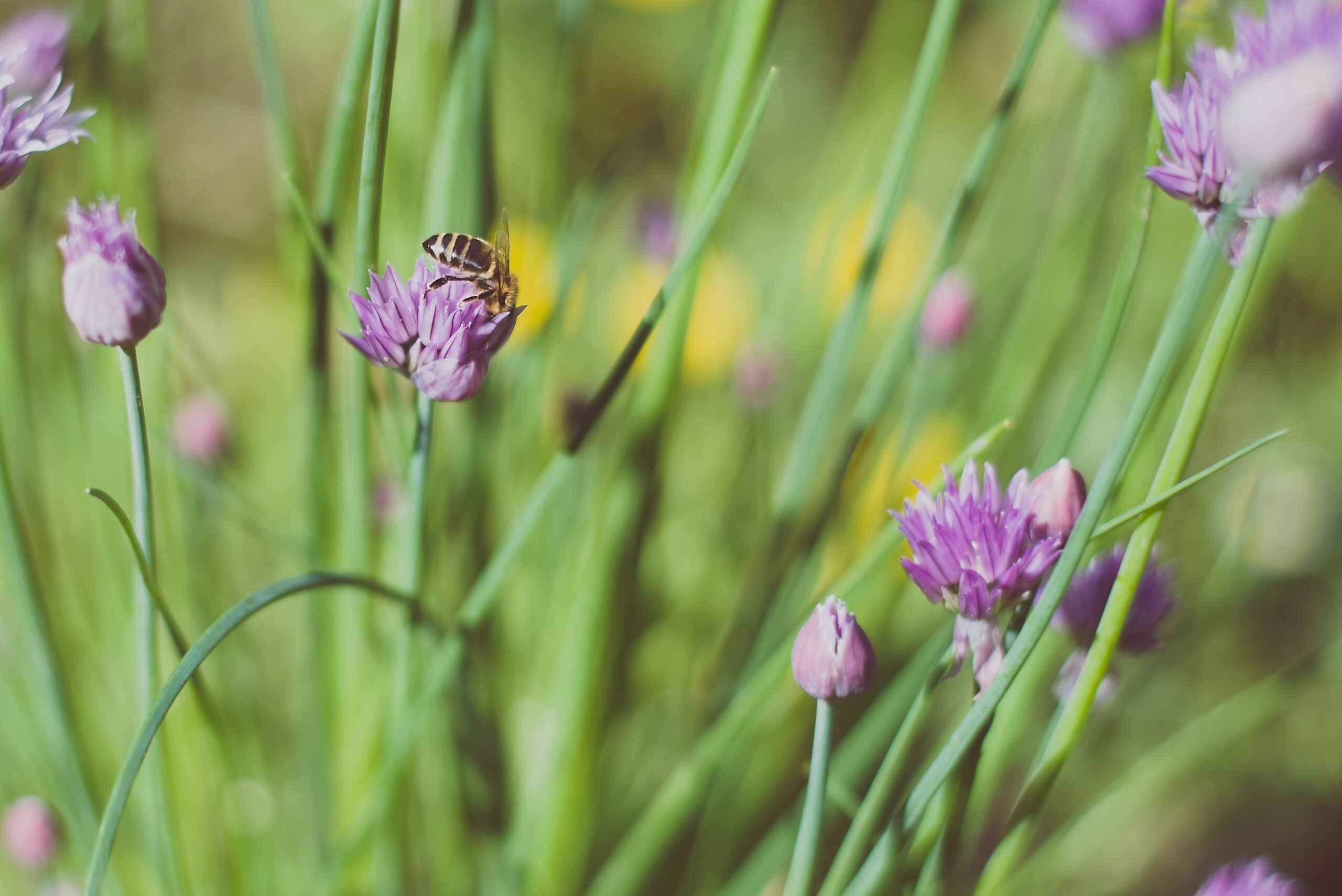Chives are an extremely popular herb to grow at home. They provide fantastic flavor to dishes such as scrambled eggs particularly when the chives are harvested fresh. However, if you are growing them at home you may have noticed that the leaves of the chive plants can change shape over time and resemble blades of grass. Is this normal? And is there anything I can do to fix it?
Chives can develop a grass like-foliage over time if the plant has been harvested many times previously and the foliage has regenerated multiple times. In this case, you are better off to replace the plant either by purchasing a new plant from a local garden center or planting seeds at home.
The reason for this is that once the foliage becomes flat then the texture is not as nice to eat. So if you are going to go to the effort of growing herbs at home in your own garden you may as well have really high-quality produce.
The other possibility that can also occur is that you may be growing garlic chives rather than chives. Garlic chives have a distinct garlic flavor and a grass like-foliage as well. So if the plant has always had flat grass like-leaves it is highly likely that you’re growing garlic chives rather than chives which will have slender tubular foliage that is hollow in the center.

How To Grow Chives From Seed
Garlic chives are generally fairly easy to grow at home and can either be planted directly into the garden or into seed trays. I personally prefer to plant chives seeds into seed trays because it is easier to control the environmental conditions which means that you can plant them earlier in the season.
If you need to purchase seeds we recommend that you visit seeds now as it is an extremely low-cost seed provider that has a wide range of specialized heirloom varieties. Click on the link below to visit their website.
To ensure that you have chives for as long as possible in your garden ready to harvest it is best to plant them in early winter indoors. To start the plants off in seed trays start by filling the trays with good quality seed raising mix which you can purchase at most garden centers.
When planting the seeds it is best to plant at least 10 seeds in a clump at depth of approximately half an inch. Once the seeds are in the seed tray they should ideally be placed in a warm location that gets plenty of sun.
The chive seeds will typically take approximately 10 to 15 days to germinate, however, this will vary significantly depending upon the temperature. The seedlings will need to spend a further 4 to 6 weeks in the seed tray before the plants are large enough to plant out into the garden. During this period it is important to keep the soil relatively moist as this will ensure that the plants grow quickly.

Transplanting Chives Seedlings Into The Garden
Once the chives’ seedlings have reached a reasonable size they can be planted out into the garden, however, it is generally a good idea to wait until the weather is starting to improve even though these plants are highly tolerant of frosty and cold conditions. If the weather remains poor it is not a problem to leave the chives in the seed tray as it will not significantly affect their development.
Once the weather improves the next step is to select a location to transplant these seedlings into. It is generally recommended that you plant the seedlings in a relatively warm sunny location that ideally gets 6 to 8 hours sun per day. However, because the chives are being harvested for the foliage rather than their fruit or flowers they can quite happily also be grown in shady conditions though the rate of growth will be slower.
In terms of soil conditions, chives are relatively tolerant of a wide range of soil conditions though like all plants they generally prefer rich moist and free-draining soil with plenty of nutrients.
When putting the plants into the ground they should ideally be placed approximately 10 inches apart which will make it easy to weed around the plants later on. To ensure that the soil in which the chives are planted remains moist it is a good idea to apply a layer of mulch which should ideally be 2 to 4 inches thick to prevent any light from getting to the soil which will also help to suppress weeds.

Harvesting Chives
Chives will typically take 2 to 3 months to really get going to the point where you can take regular harvests. To harvest the plants most people use scissors as it is quick and easy. The foliage should be removed from the base of the plant.
However, when harvesting it is important to leave some foliage on the plants as this will aid in its recovery as it allows the plant to continue to photosynthesize. If the plants are relatively young it is important to have four or five plants if you are harvesting regularly to ensure that there is always foliage on hand for you.
As chives are biennials it is quite common for the plants to establish themselves in the first year and then flower in the second season. At this point in time, it is a good idea to take advantage of this by harvesting any seeds that are produced to avoid than need to repurchase the seeds.
To maintain a constant supply of chives seeds they should be planted every year as the plants will become tougher over time. If they are harvested repeatedly and eventually will reach the point at which the foliage resembles blades of grass.

Comments are closed